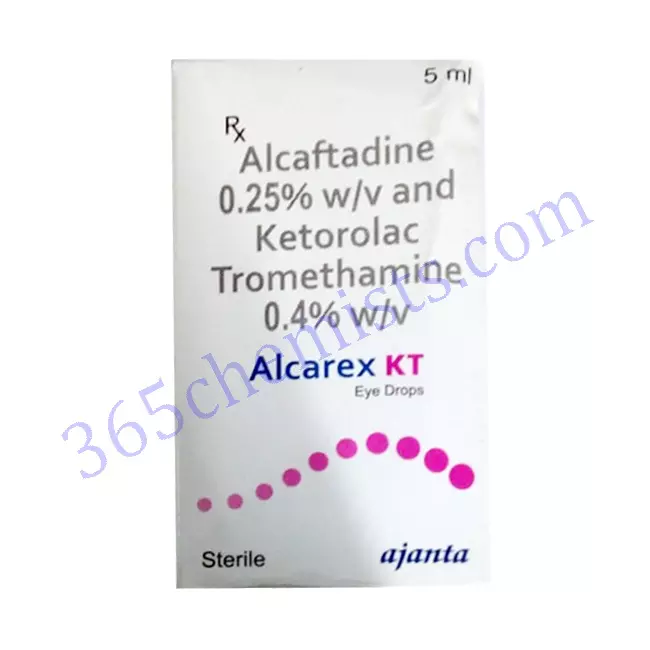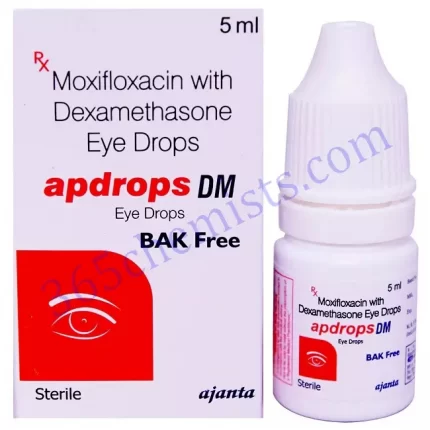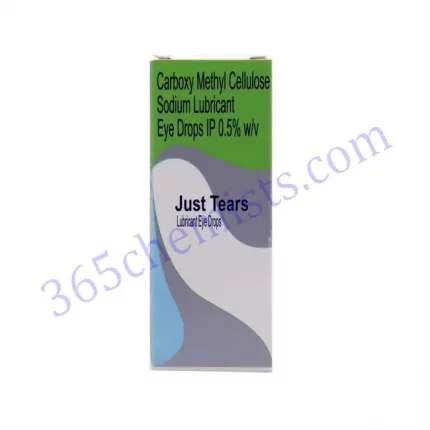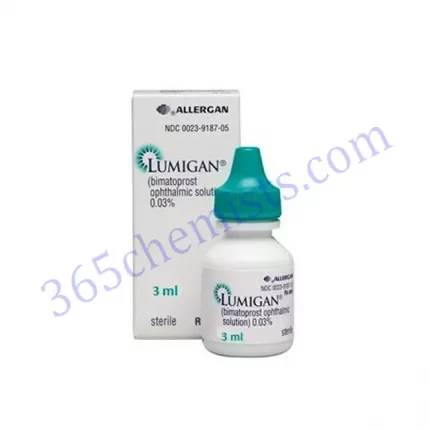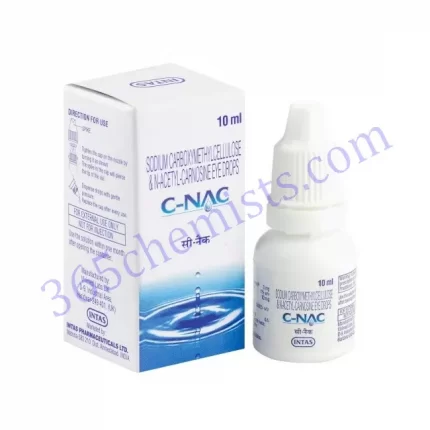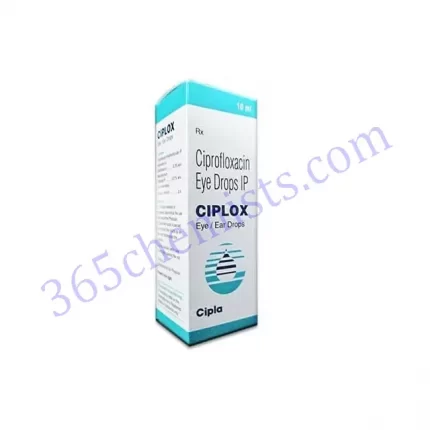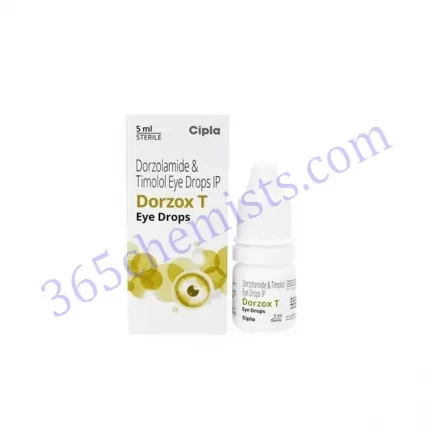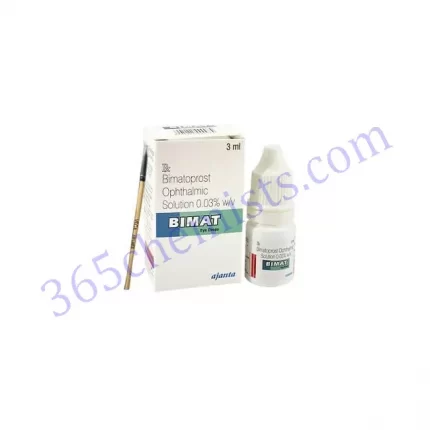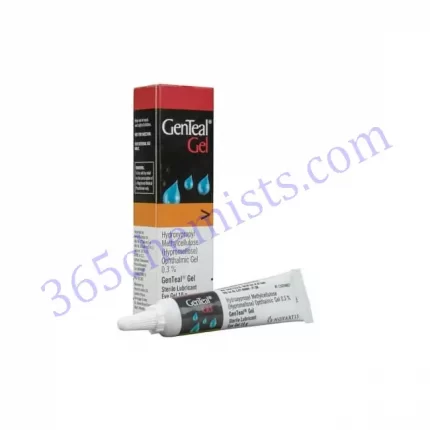Alcarex KT Eye Drop 5ml (Alcaftadine 0.25%/Ketorolac 0.4%): A Comprehensive Overview
The ophthalmic solution known as Alcarex KT Eye Drop combines the beneficial properties of alcaftadine (0.25%) and ketorolac (0.4%) into a single product. It is recommended to patients suffering from allergic conjunctivitis as well as postoperative ocular irritation as a therapy option. This detailed summary offers helpful information on Alcarex KT Eye Drop, including its advantages, directions for use, potential adverse effects, and preventative measures.
Understanding Alcaftadine and Ketorolac
Alcaftadine is an antihistamine that acts by inhibiting the histamine receptors in the eyes. This reduces the symptoms of eye allergies. Alcaftadine helps decrease symptoms of allergic conjunctivitis, such as itching, redness, and watery eyes, by blocking the impact that histamine has on the body.
Ketorolac is a nonsteroidal anti-inflammatory medication (NSAID) that helps relieve pain and inflammation in the body. Ketorolac is also known as ketorolac. Ketorolac, which is found in the eye drop known as Alcarex KT, is useful for the management of postoperative ocular inflammation. It does this by suppressing the formation of prostaglandins, which are the molecules responsible for the inflammatory response.
Benefits of Alcarex KT Eye Drop
Relief from Allergic Conjunctivitis: Alcarex KT Eye Drop is an excellent treatment for the symptoms of allergic conjunctivitis, such as itchiness, redness, and watering of the eyes. By inhibiting histamine receptors, which are responsible for the allergic reaction, alcaftadine provides relief that is both immediate and long-lasting.
Postoperative Ocular Inflammation Management: The use of Alcarex KT Eye Drops can assist in the management of postoperative ocular inflammation, which may develop following particular eye procedures. Because of its anti-inflammatory qualities, ketorolac helps reduce inflammation, which in turn provides comfort and helps the body heal.
Usage Instructions
Follow these guidelines to ensure that you use the Alcarex KT Eye Drop in a manner that is both safe and effective:
- Before touching the eye drop container, be sure that you have properly cleaned your hands with both soap and water.
- Look at the sky while slightly tilting your head backward.
- Create a little pocket under your lower eyelid by pulling your lower eyelid down gently.
- While keeping the bottle of Alcarex KT Eye Drops in an inverted position and bringing it in close proximity to your eye, place the required amount of drops into the pocket. In order to prevent contamination, you should avoid contacting your eye or eyelid with the tip of the dropper.
- Put your lower eyelid back into its natural position and softly close your eye. It is important to refrain from blinking too frequently and not to squeeze your eyes shut too hard.
- If any of the solution splashes onto your face, you should remove it with a clean piece of tissue or a clean towel.
- After each usage, ensure that the eye drop container is well sealed with the top so that it does not become contaminated.
It is essential to ensure that you take your medication as directed, both in terms of the dosage and the frequency, as indicated by your healthcare provider. Never use more than the recommended amount of Alcarex KT Eye Drop, and never discontinue using it without first visiting your healthcare provider.
Related Product
Alcarex Eye Drop 5ml
Alcarex KT Eye Drop 5ml
Possible Side Effects
Although the Alcarex KT Eye Drop is generally well accepted, there is a possibility that it could induce specific adverse effects in some people. The following are examples of common adverse effects:
- Experiencing a stinging or burning feeling in the eyes for a short period of time is a common side effect that is often risk-free and goes away rather soon.
- Dryness in the eyes and/or discomfort in the eyes: After taking Alcarex KT Eye Drop, some people may experience a brief feeling of dryness in the eyes or discomfort in the eyes.
- Vision haziness It is possible that you will experience vision haziness for a short period of time, particularly after the eye drops have been administered. In most cases, this unwanted effect goes away on its own.
- It is imperative to seek immediate medical assistance in the event that any side effects continue, get significantly worse, or cause substantial discomfort.
Precautions and Considerations
Before utilising the Alcarex KT Eye Drop, it is essential to take the following precautions into consideration:
- Your healthcare practitioner should be informed of any known allergies or sensitivities you have to medications, particularly antihistamines or nonsteroidal anti-inflammatory drugs (NSAIDs).
- If you wear contact lenses, you shouldn’t use Alcarex KT Eye Drop since it could contaminate your lenses. Before you put the eye drops in your eyes, you should take out your contact lenses and wait at least 10 to 15 minutes before putting them back in.
- Systemic Medications: If you are currently using any systemic medications, you should inform your healthcare practitioner about this, as there is a possibility that Alcarex KT Eye Drop could cause adverse drug interactions.
- issues Relating to Your Health It is important that you tell your healthcare provider about any pre-existing medical issues that you have as well as any drugs that you are now taking. They will be able to evaluate the potential dangers and benefits of utilising the Alcarex KT Eye Drop in your particular circumstance.
Conclusion
Alcarex KT Eye Drop is an excellent combination drug for the treatment of allergic conjunctivitis and postoperative ocular inflammation. This medication contains alcaftadine at a concentration of 0.25% and ketorolac at a concentration of 0.4%. Individuals are able to use Alcarex KT Eye Drop safely and successfully if they adhere to the instructions for its application, are aware of the potential for adverse effects, and take the appropriate safety precautions. In addition to routine eye examinations, maintaining regular communication and follow-up with one’s healthcare providers is an important part of optimising one’s treatment outcomes and continuing to monitor and monitor treatment progress.

